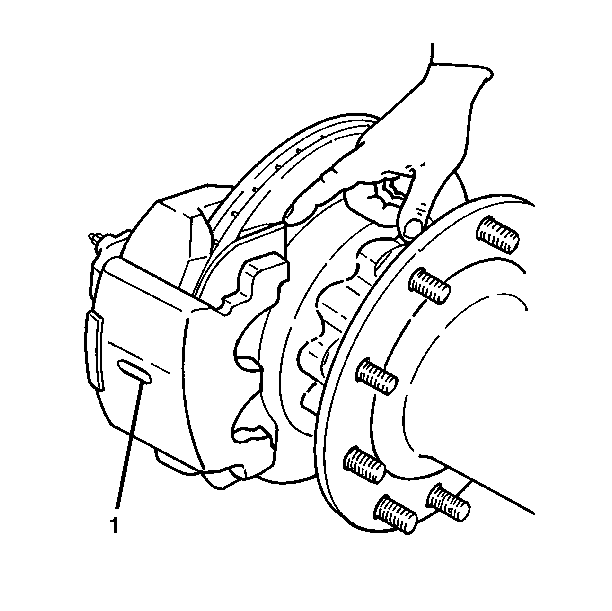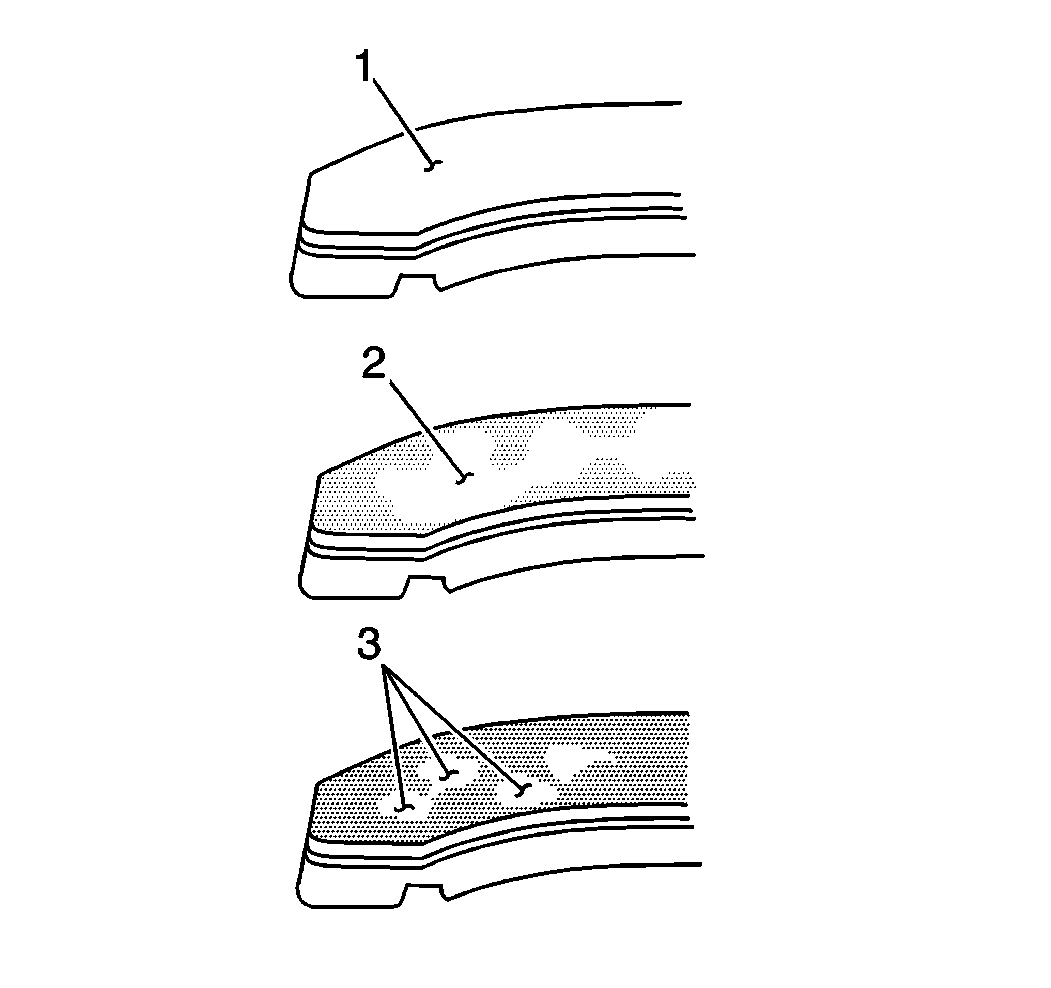Inspect the brake linings every 9 656 km (6,000 mi) and any time the wheels are removed (tire rotation, etc.). The preliminary inspection can be made with a mirror and flashlight. Remove the tire and wheel assembly in order to measure the linings.

Measure the linings with the brake caliper installed. The outer lining on brake calipers is exposed for easy inspection. Inspect the inner linings through the inspection hole (1) in the brake caliper housing. Replace the brake pad assemblies when the lining is worn to 1.6 mm (0.063 in). Measure the linings at their thinnest point.
Brake linings should lightly contact the brake rotor or have no more than 0.13 mm (0.005 in) clearance. It is normal for the brakes to drag if the brakes were applied shortly before checking the brake clearance. If the brake linings are more than 0.13 mm (0.005 in) from the brake rotor, pump the brake pedal several times and recheck the lining clearance. If the lining clearance is still not within specifications, check for unevenly worn surfaces on the brake rotor, brake linings, or brake caliper pistons. New brake linings may have more clearance until they have worn to match the brake rotor. If the gap between either brake caliper piston face and the brake pad is more than 1.8 mm (0.071 in), overhaul the brake caliper.

Remove the brake caliper in order to inspect the brake lining surface conditions. Refer to Brake Caliper Replacement . The brake linings must be free of grease and oil. The brake linings should show at least 70 percent wear (2) over the braking surface compared to a new lining (1) in order to indicate good lining contact. Replacement of the brake pad assemblies at 1.6 mm (0.063 in) of wear represents a 20 percent contact area (3).
Knock-back is a condition that occurs when a turning brake rotor pushes the brake linings and brake caliper pistons farther into the bores than normal. Excessive clearance results from the knock-back. The driver will notice increased pedal travel with the next brake application. Loose or worn suspension parts, especially the wheel bearings, can increase knock-back. Refer to Wheel Bearings Diagnosis in Suspension Diagnosis.
